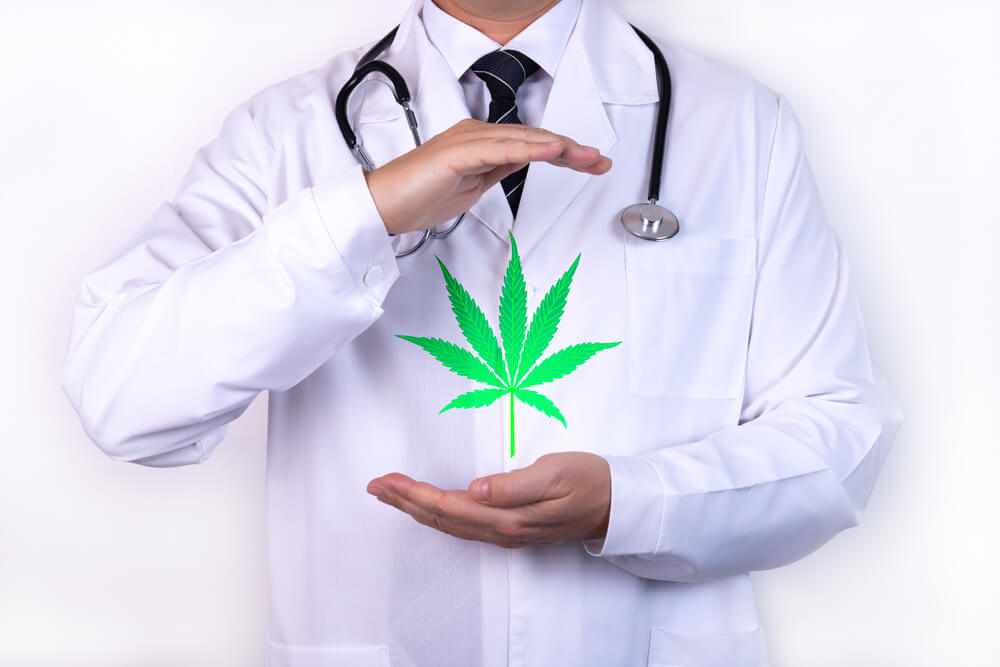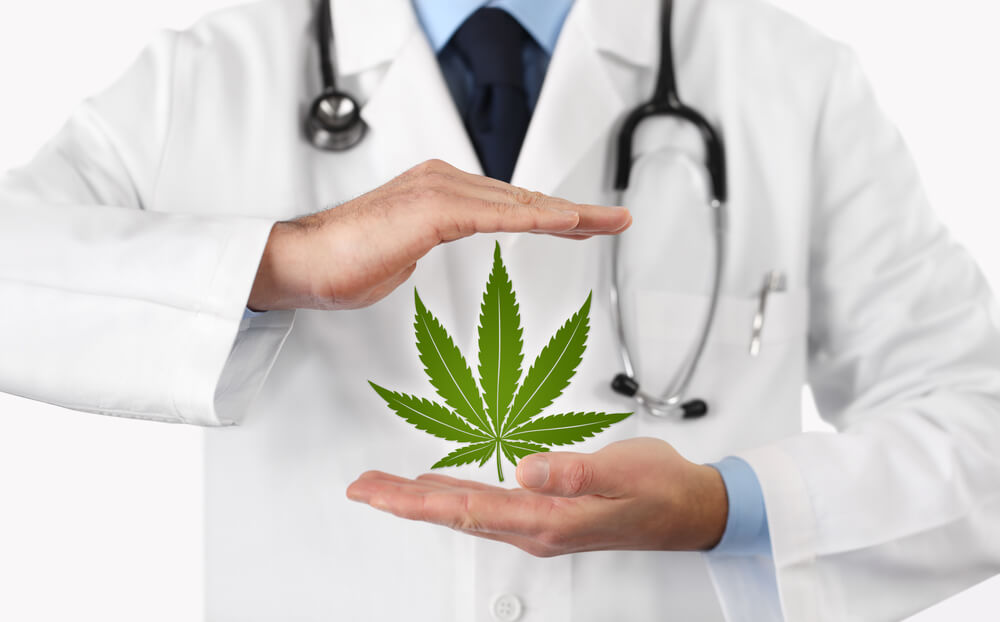Table of Contents
Many people look for better ways to manage pain or tough health issues. Medical marijuana helps with problems like seizures, nausea, and chronic illness. This blog post will explain “Medical Marijuana 101: How It Works And What It Treats” in simple steps you can follow.
Find out how it may help you feel better.
What Is Medical Marijuana?
Moving from an overview, here is what medical marijuana means for patients. Medical marijuana uses the cannabis plant or its chemicals to treat health issues. Doctors may recommend it for pain relief, seizures, nausea, or chronic illness symptoms.
Cannabinoids in the plant include THC (tetrahydrocannabinol) and CBD (cannabidiol). These compounds help manage common problems such as insomnia and inflammation. “Medical cannabis is not a cure-all, but it helps many people who do not get results with other medicines,” reports the National Academies of Sciences in 2017.
Different states regulate medical marijuana use. Patients need a doctor’s recommendation to access these products under state law. Strain selection depends on needs and how much THC or CBD each product contains.
How Medical Marijuana Works
Medical marijuana works through the body’s endocannabinoid system. This system helps regulate pain, mood, and other important functions with cannabinoids like THC and CBD.
The Endocannabinoid System
The endocannabinoid system helps control mood, pain, sleep, and appetite. It includes special cell receptors called CB1 and CB2. These are found in the brain and other organs. Natural chemicals in the body, known as endocannabinoids, attach to these receptors like a key fits into a lock.
Cannabinoids from cannabis such as THC and CBD also connect with these receptors. THC gives the “high” feeling by acting on the brain’s CB1 receptor. CBD does not cause a high but can help with seizures or anxiety by working on both CB1 and CB2 sites differently.
This system affects how people feel pain or nausea; it even plays a role in chronic conditions and immune function.
The Role of Cannabinoids and Terpenes
Cannabinoids are the main active chemicals in medical marijuana. THC (tetrahydrocannabinol) causes most of the “high.” It helps with pain relief, nausea, and sleep issues like insomnia.
CBD (cannabidiol) does not cause a high but calms seizures and lowers anxiety for many patients.
Terpenes give cannabis its smell and flavor. Some terpenes may also help treat pain or boost mood. The mix of cannabinoids and terpenes changes how each strain works. Patients often choose strains based on symptoms, such as chronic illness or appetite loss, using both cannabinoid levels and terpene profiles.
This lets doctors match treatment to patient needs for better results.
Common Conditions Treated by Medical Marijuana
Medical marijuana can help with many health issues. People often use it for chronic pain, mental health problems, and nausea.
Chronic Pain
Chronic pain affects millions of people. It can last for months or even years. Many patients seek relief through medical marijuana. Cannabinoids like THC and CBD may help ease this pain.
THC can reduce pain signals in the brain, while CBD has anti-inflammatory properties.
Studies show that many users find significant relief from chronic conditions with medical marijuana. This option offers hope for those who have tried other treatments without success.
A proper strain selection can make a difference in effectiveness.
Medical marijuana provides new options for managing chronic pain.
Mental Health Disorders
Mental health disorders can affect many people. These include anxiety, depression, and PTSD. Medical marijuana may help manage symptoms for some patients. THC and CBD are key compounds in medical cannabis that can reduce stress and improve mood.
Studies show that cannabinoids might help with conditions like insomnia and chronic anxiety. Many users report better sleep and less worry after using medical marijuana. Benefits vary from person to person, so strain selection is important for best results.
Next, we will discuss inflammation and autoimmune diseases treated by medical marijuana.
Inflammation and Autoimmune Diseases
Inflammation and autoimmune diseases often cause pain and discomfort. Medical marijuana can help reduce inflammation. Cannabinoids like THC and CBD work by interacting with the body’s receptors.
They may lower swelling and ease symptoms.
Conditions such as rheumatoid arthritis, lupus, and multiple sclerosis involve an overactive immune response. In these cases, cannabinoids can restore balance. Patients often report less pain and improved quality of life after treatment with medical cannabis.
This option offers hope for those affected by chronic inflammatory conditions.
Nausea and Appetite Issues
Nausea can be a tough problem for many people. Medical marijuana helps reduce this feeling. It eases stomach discomfort and encourages better eating habits. THC, one of the main cannabinoids in medical cannabis, is often the key player here.
Many patients report that using THC increases their appetite. This benefit is important for those who struggle with eating due to illness or treatment side effects. Patients may find relief from nausea while also improving their food intake when using medical marijuana products containing THC.
How to Use Medical Marijuana
You can use medical marijuana in different ways. Popular methods include smoking, vaping, or taking edibles. Always follow dosing guidelines from your doctor to ensure safety and effectiveness.
Choose the right strain for your needs to get the best results.
Methods of Consumption
There are several ways to use medical marijuana. Each method affects the body differently.
- Inhalation: Smoking or vaping is common. Users feel effects quickly, often within minutes.
- Edibles: These are food products infused with cannabis. Effects take longer to kick in, usually one to two hours, but can last longer.
- Tinctures: This liquid form is taken under the tongue. It offers a fast onset of effects, similar to inhalation.
- Topicals: Creams and lotions that contain cannabinoids can be applied directly to the skin. They are popular for localized pain relief and do not cause a high.
- Capsules: Pills or capsules provide a controlled dosage. They have a slower onset like edibles but offer convenience and consistency.
- Oils: Cannabis oils can be used in various ways, including in cooking or as tinctures. They provide flexibility in dosing and effects.
- Transdermal Patches: These patches release cannabinoids over time through the skin. They offer a steady dose without smoking or ingesting.
- Concentrates: These potent forms of cannabis include waxes or shatter. Users need to handle them with care due to their strength and effects.
Choosing a method depends on personal preference and desired outcomes for pain relief or other issues like insomnia or seizures.
Proper Dosing Guidelines
Medical marijuana dosing can be tricky. Finding the right amount is crucial for achieving pain relief and other benefits.
- Start low and go slow. Begin with a small dose and gradually increase it until you find what works best for you.
- Monitor effects closely. Pay attention to how your body reacts after each dose, especially if you are using THC or CBD products.
- Consult a healthcare provider. A doctor familiar with medical marijuana can help guide your dosing based on your condition and needs.
- Use measuring tools if needed. Products like tinctures often come with droppers, while edibles may have clear serving sizes, making it easier to track doses accurately.
- Consider method of consumption. Different methods, such as smoking or edibles, vary in how quickly they work and how long their effects last; adjust doses accordingly.
- Be mindful of strain potency. Some strains of medical cannabis are stronger than others, so take this into account when determining dosage levels and potential effects.
- Note any side effects promptly. If experiencing any negative reactions from medical marijuana, lower the dosage or consult a healthcare professional right away.
Following these guidelines can help ensure a safe experience with medical marijuana while maximizing its benefits for chronic conditions like pain, insomnia, or nausea.
Conclusion
Medical marijuana offers a new path for many people. It can help with pain relief, mental health issues, and more. Understanding how it works is key to using it safely. Always consult a doctor before trying medical cannabis.
This will ensure you make informed choices that suit your needs.








